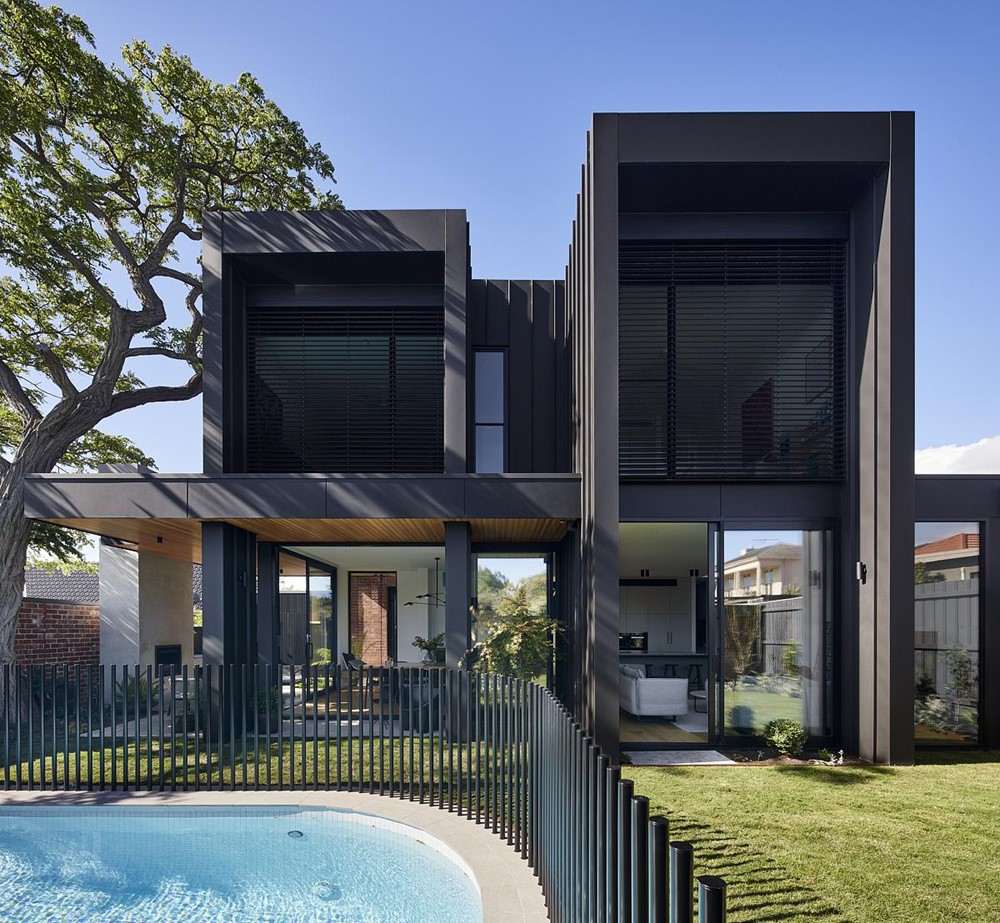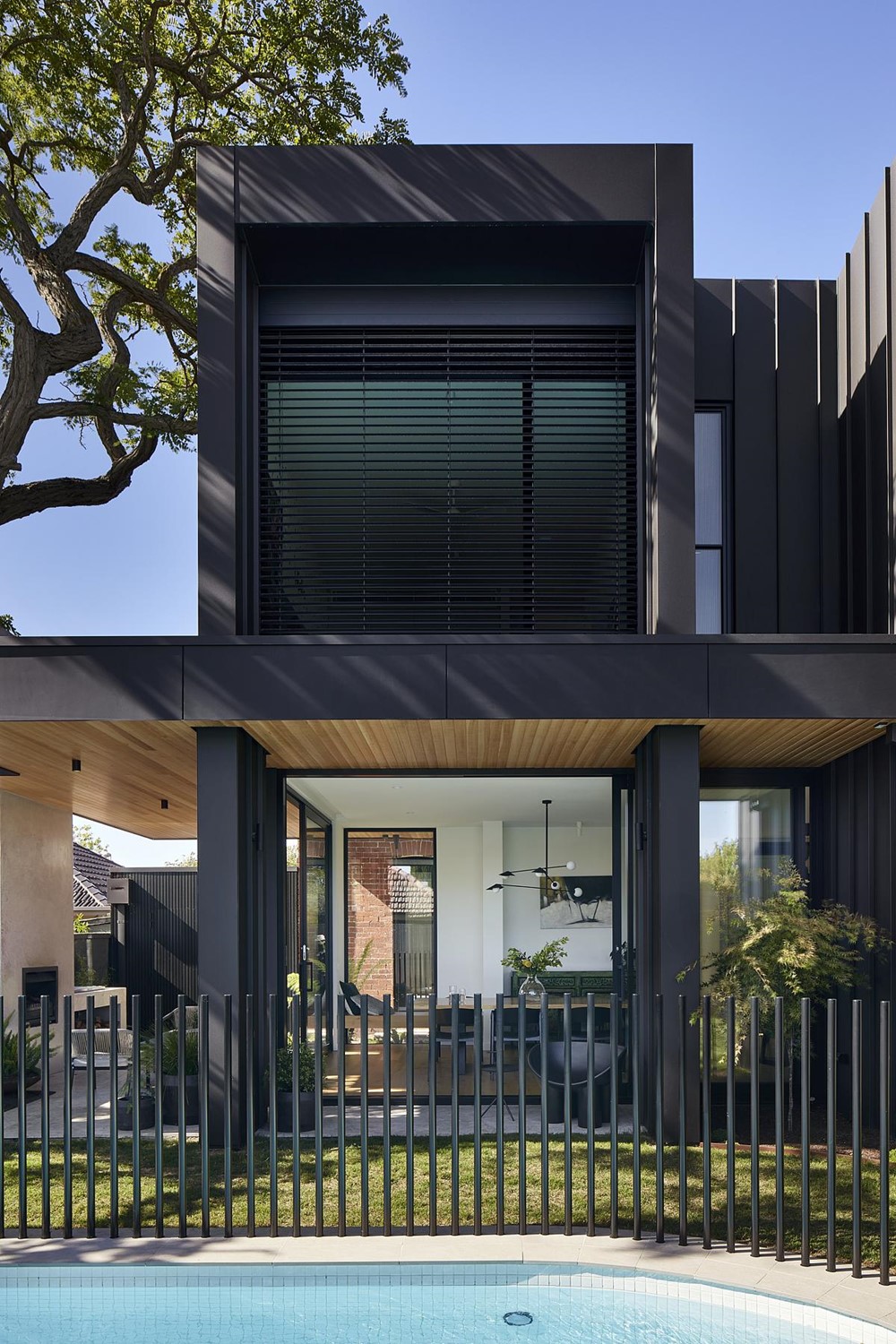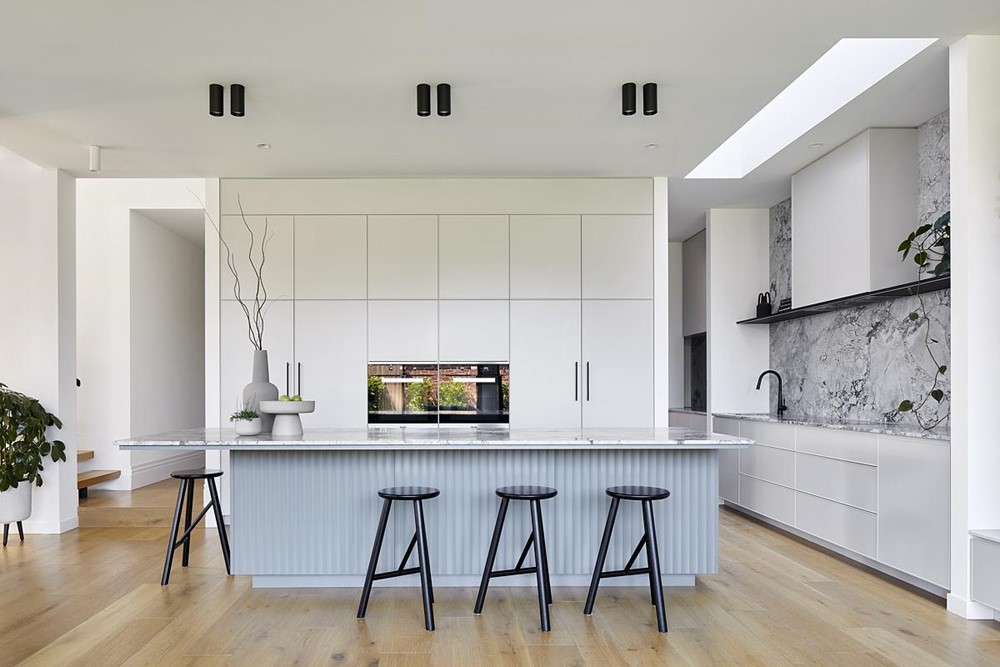Wattletree House is a project designed by Design by AD. Sitting stealthy behind the original heritage home, Wattletree House expands its presence through a newly defined footprint. Ensuring the original Edwardian era frontage remains the focus from approach, the addition is cloaked in a darked palette to emphasise its recessive intent, yet still has a unique boldness. In an honouring of the established nature and scale of homes in the area, the preservation of heritage was a key driver throughout, opting to celebrate the differences between old and new by way of contrast, instead of mimicking styles throughout. Photography by Tatjana Plitt.
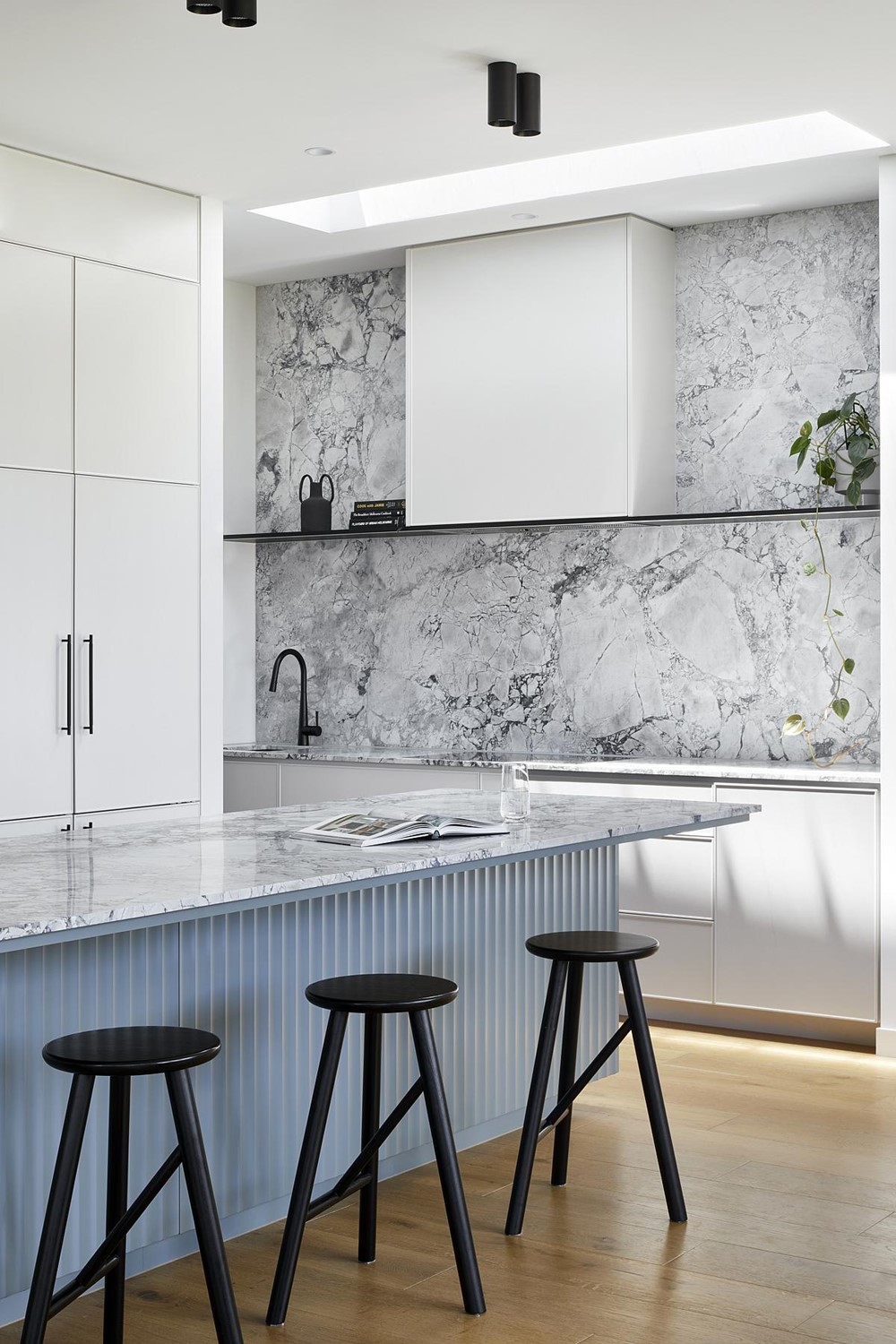
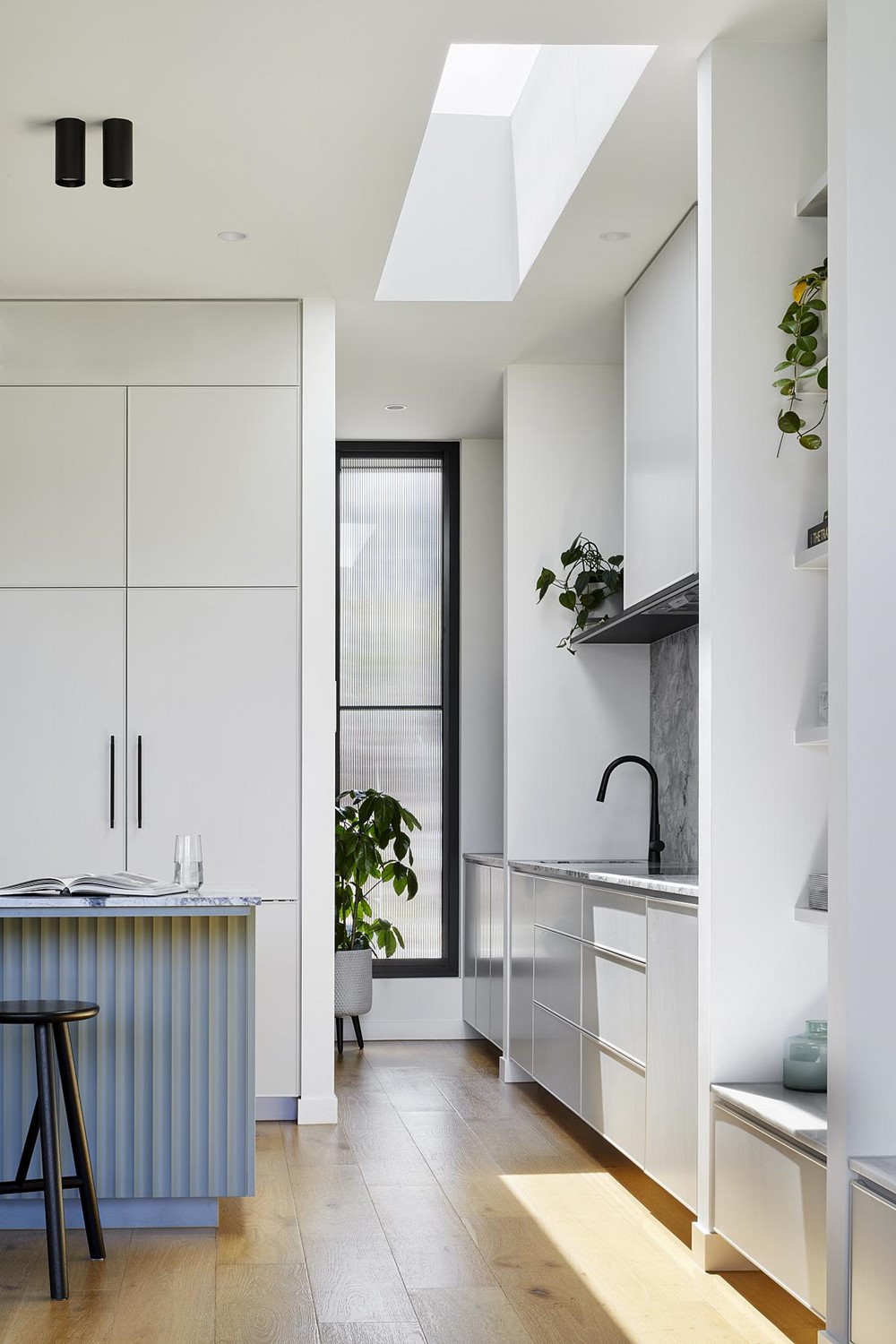
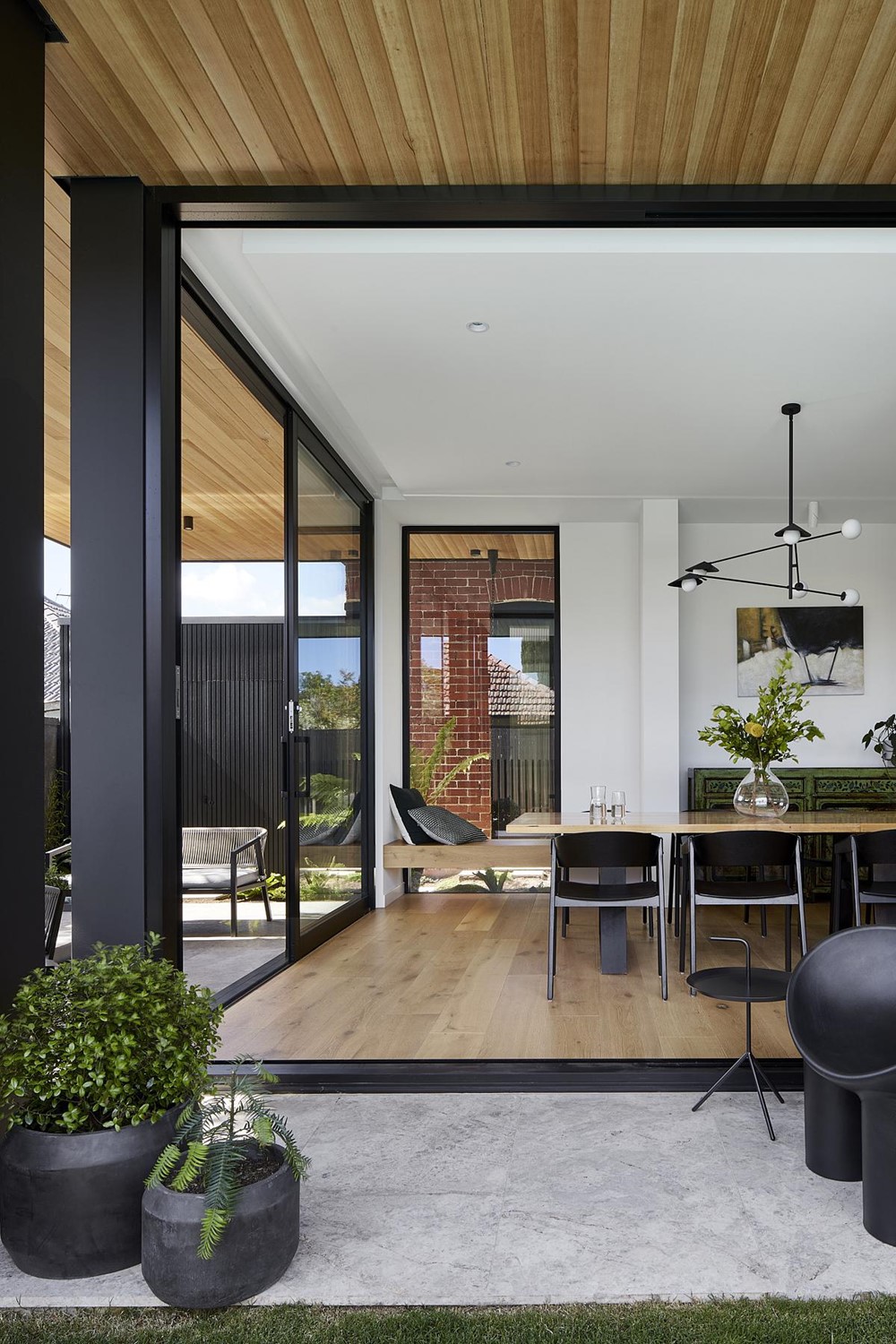
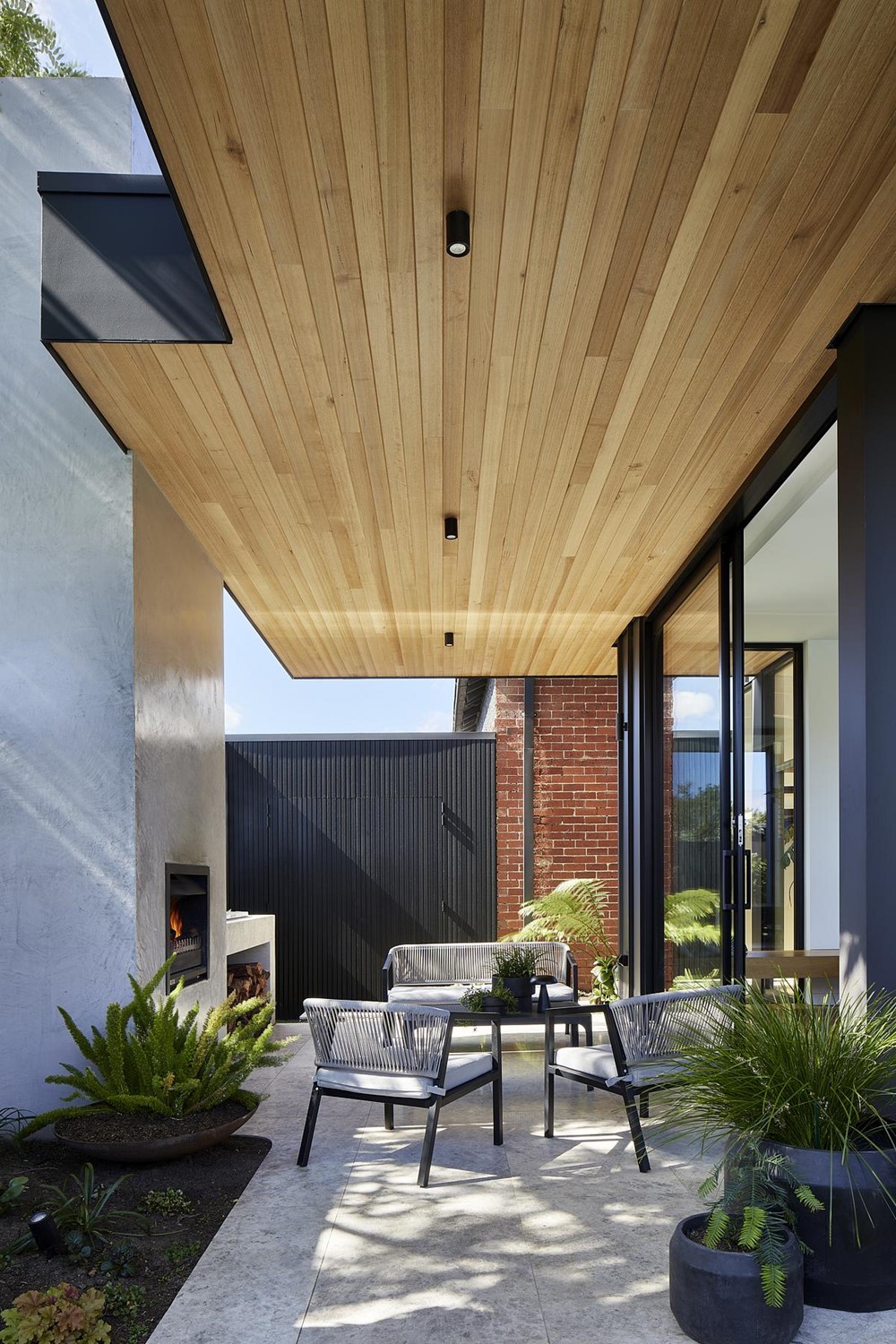
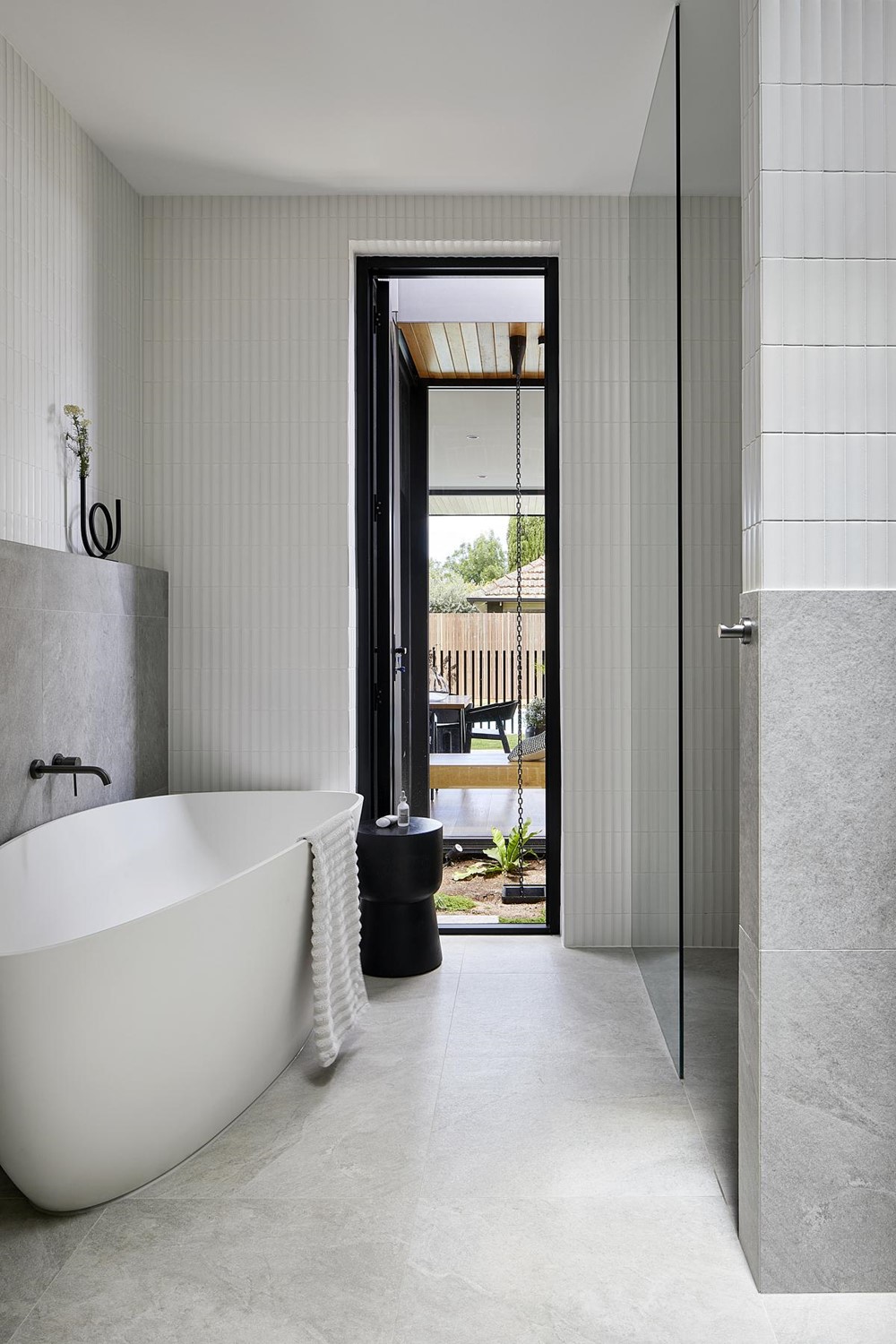
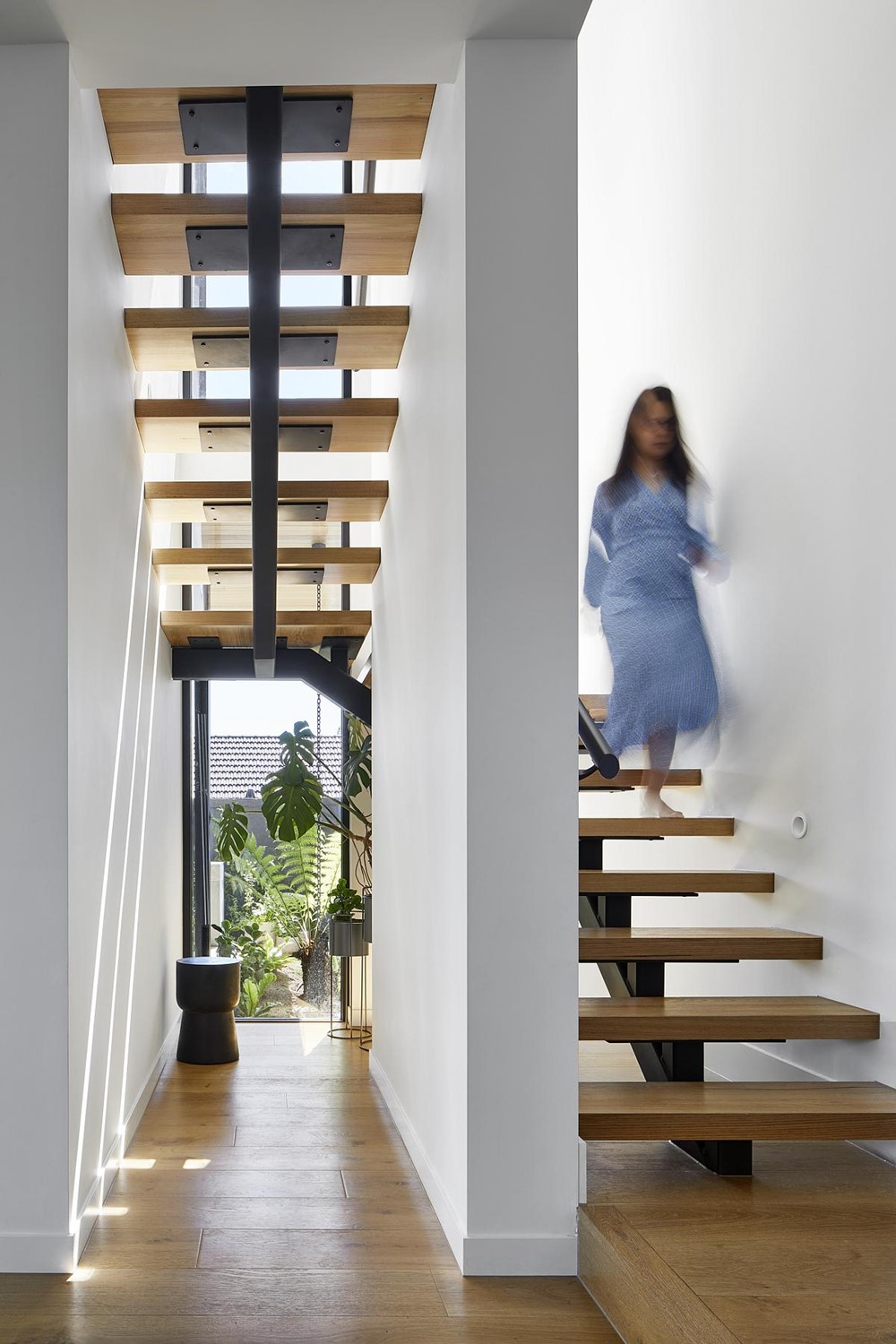

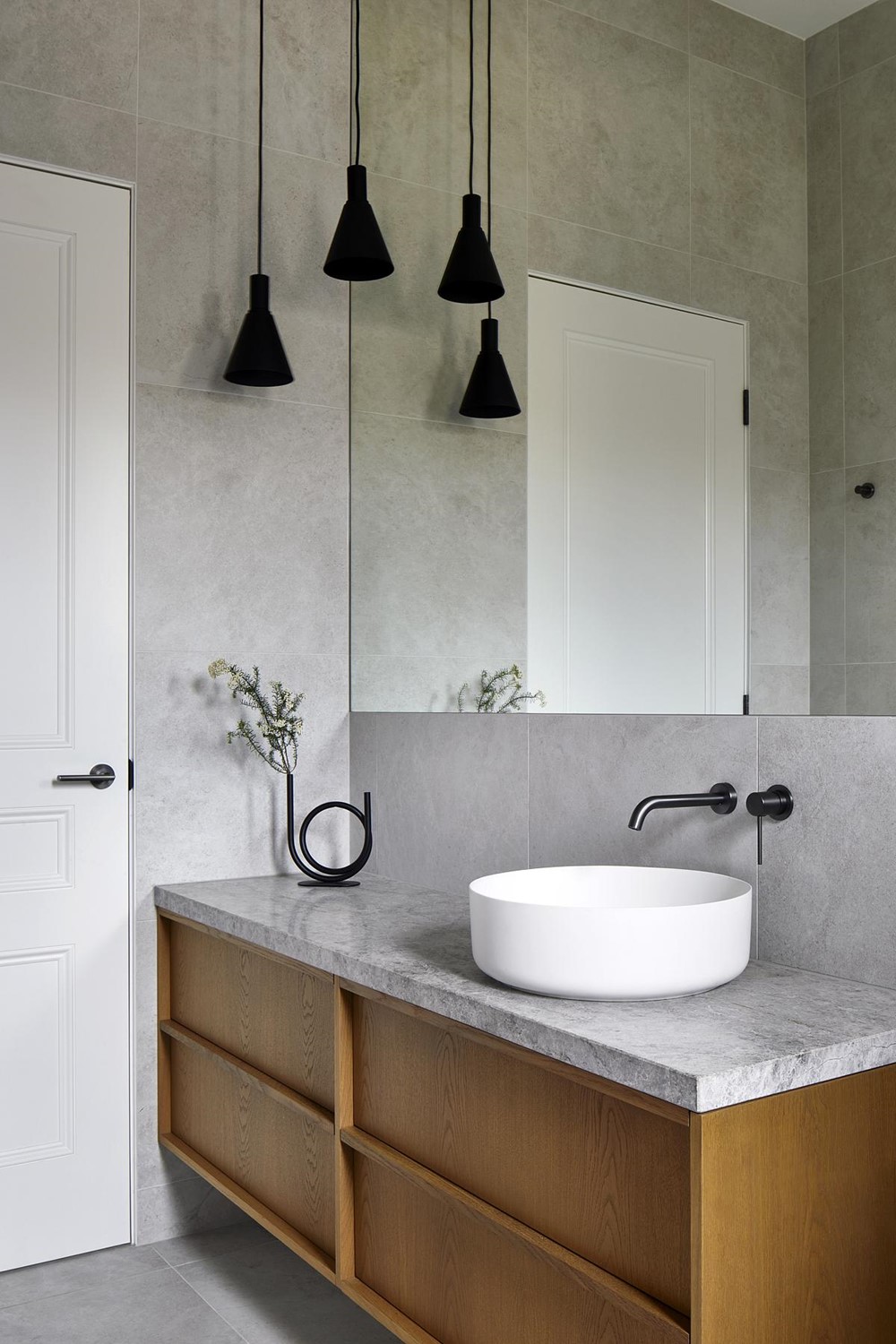
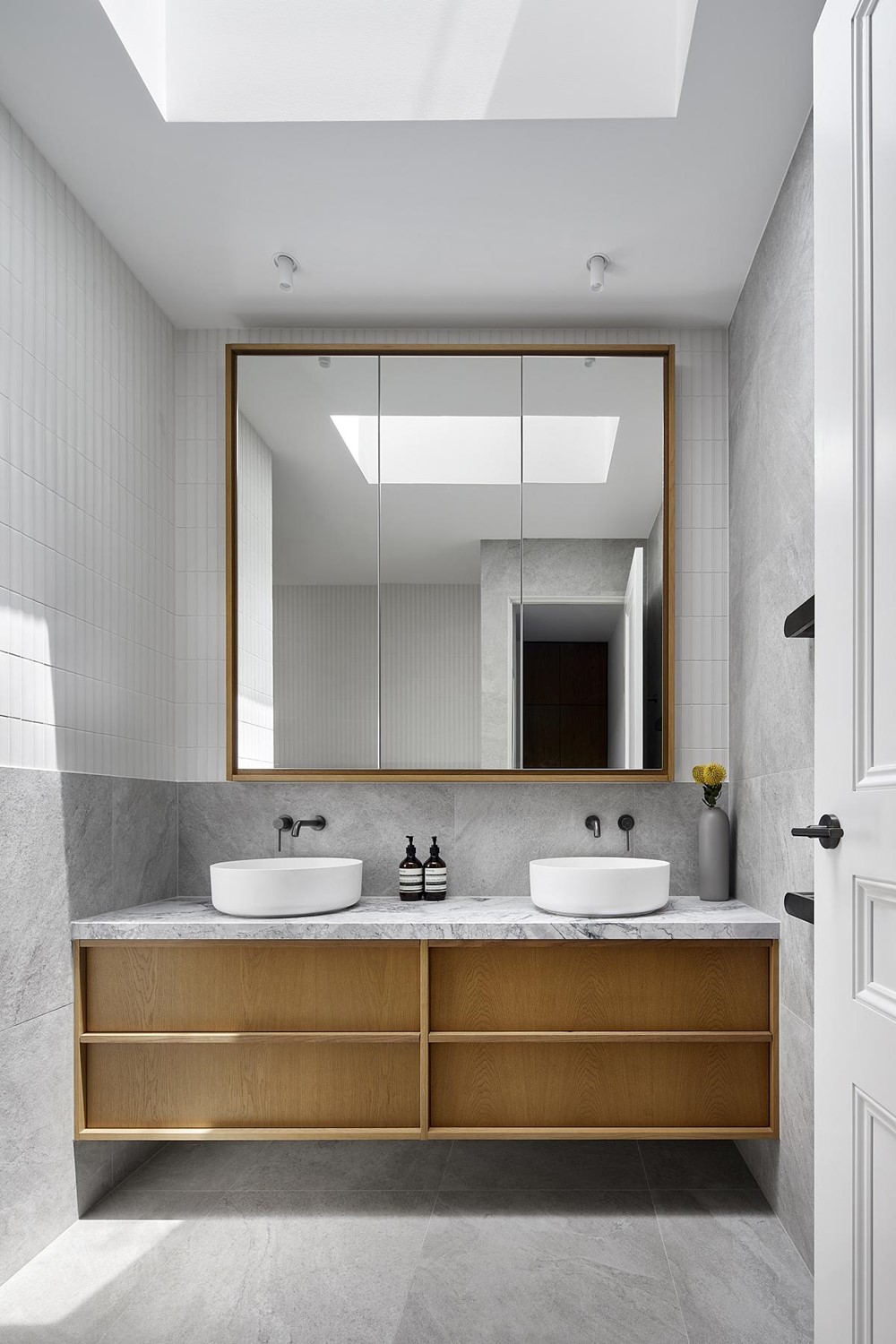
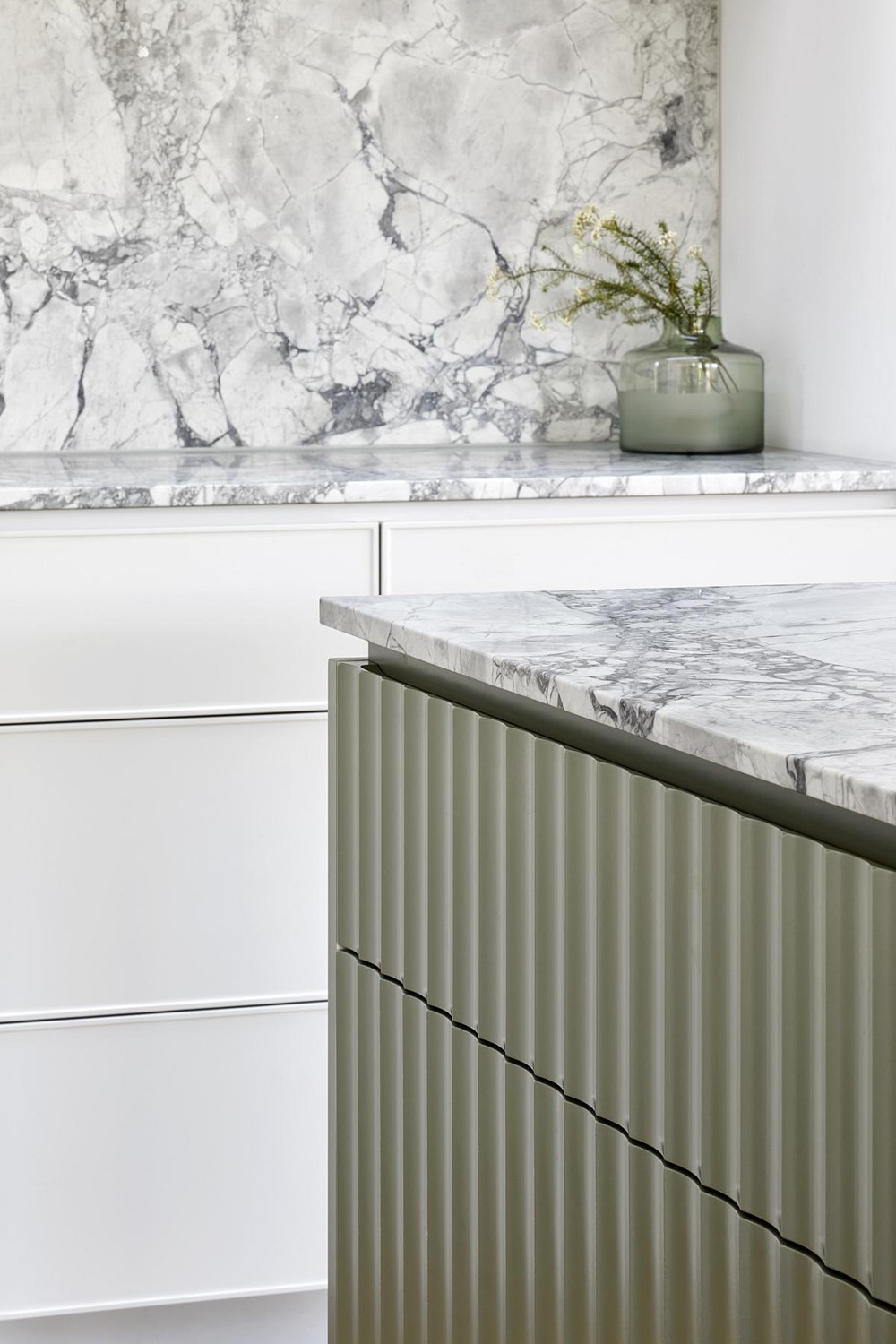
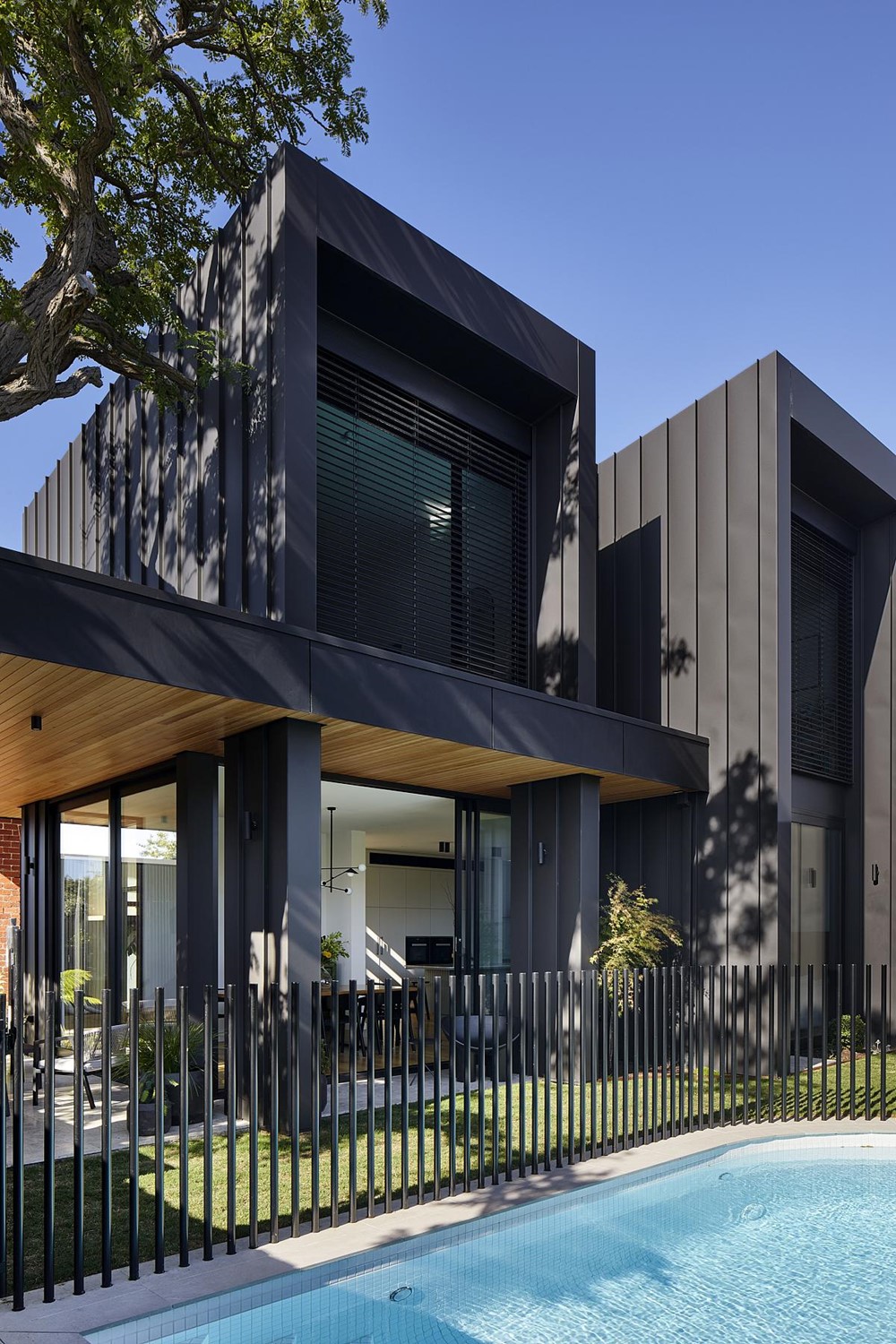
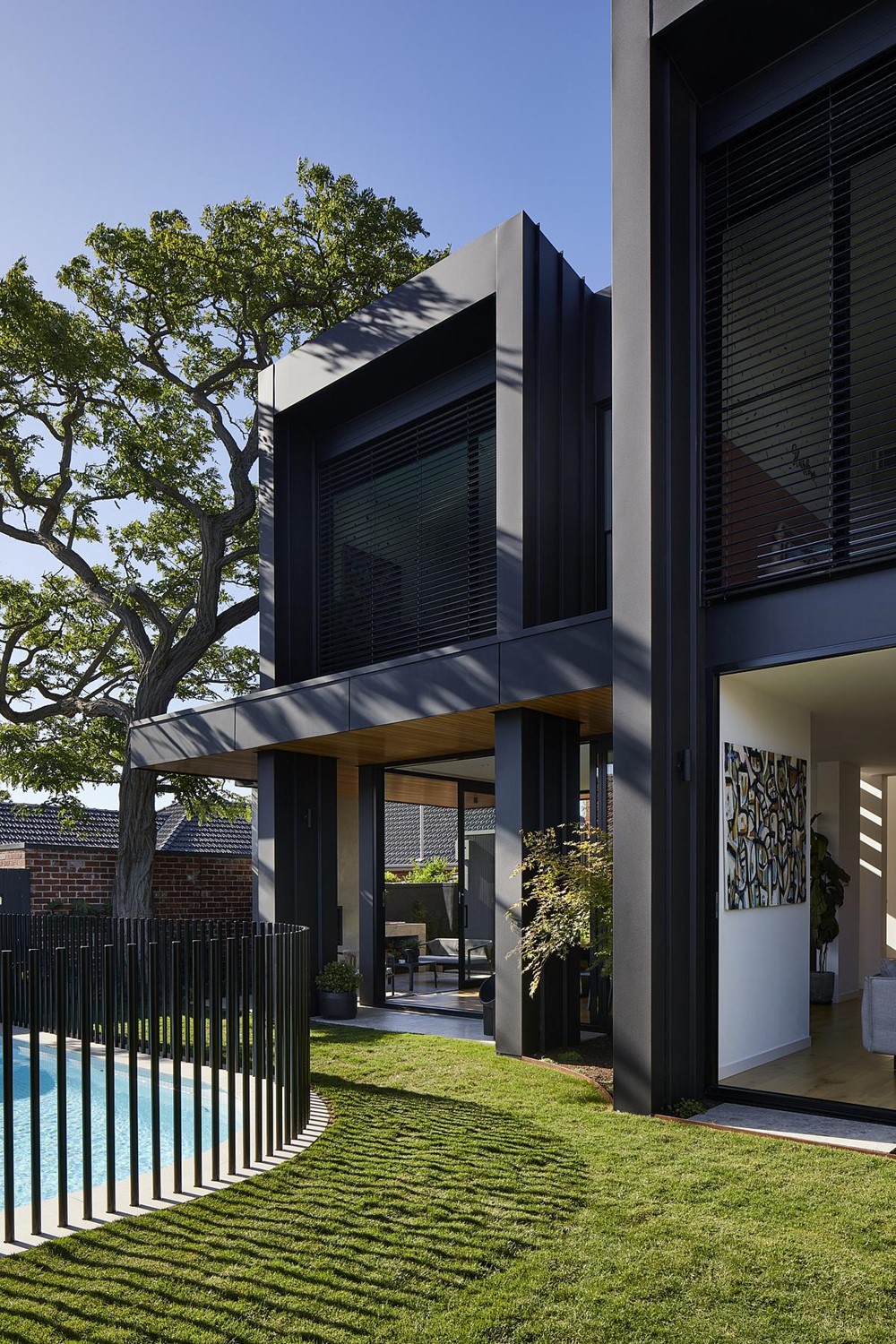
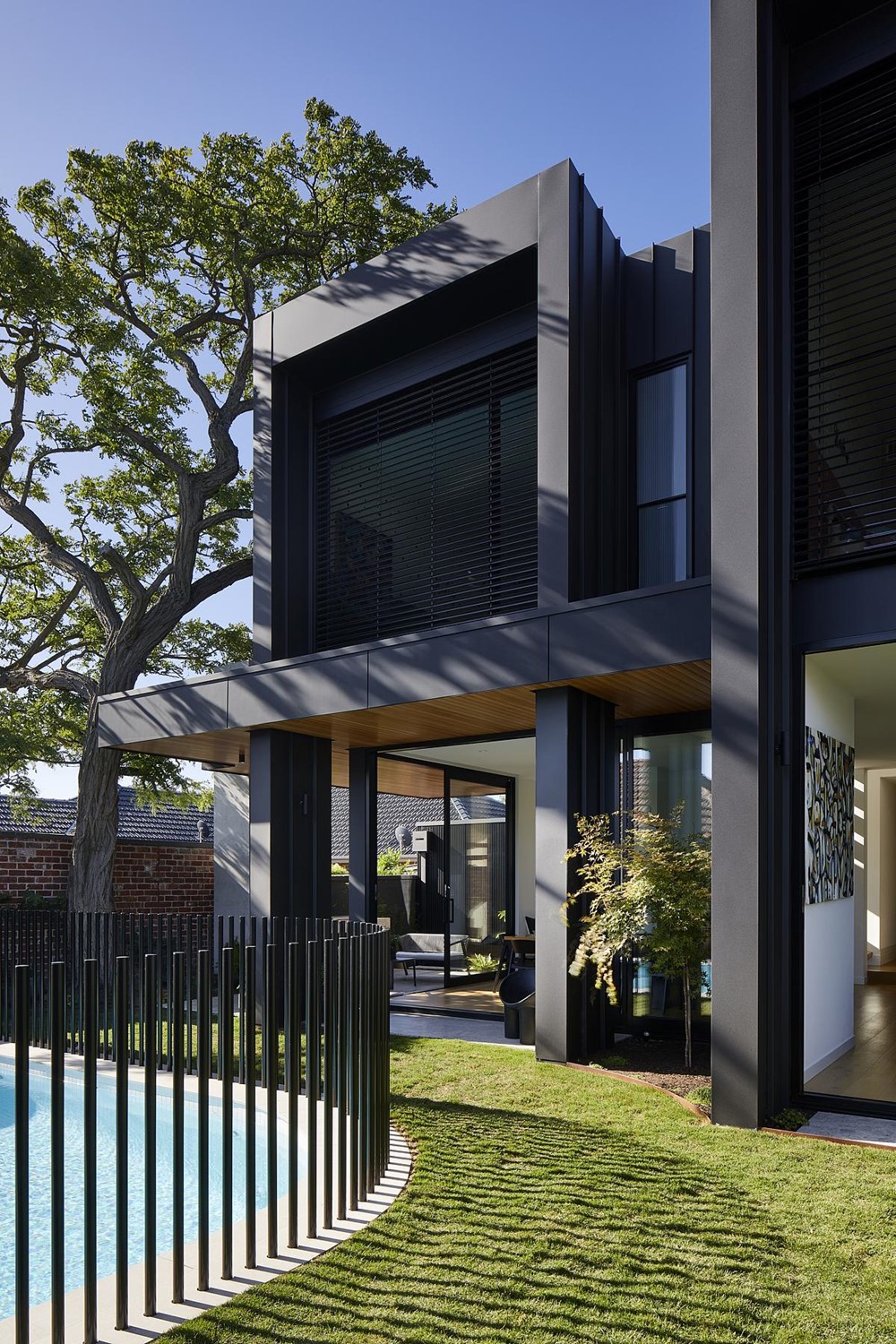
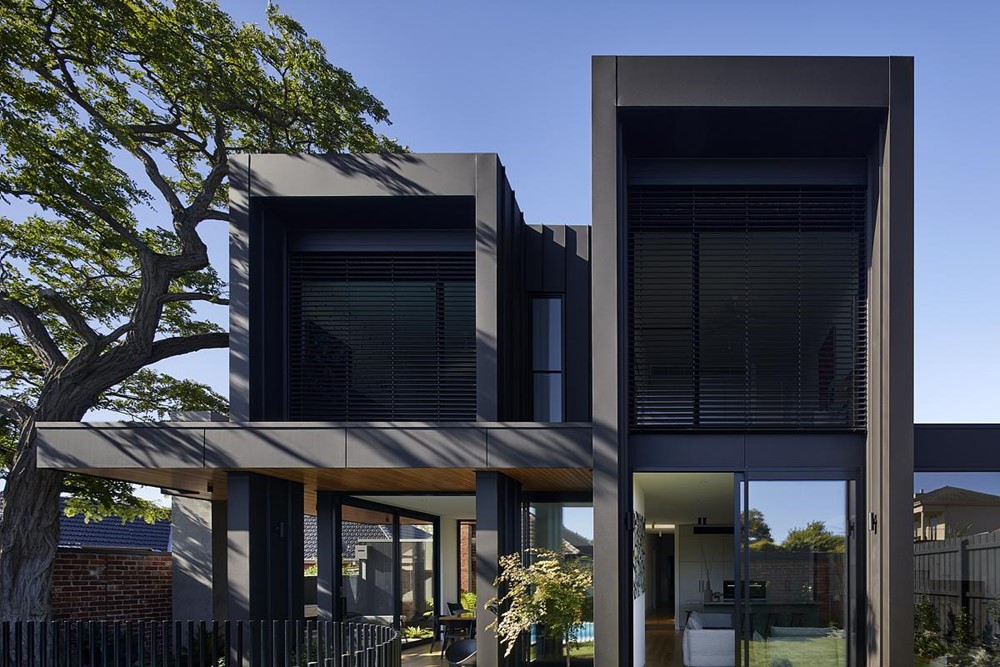
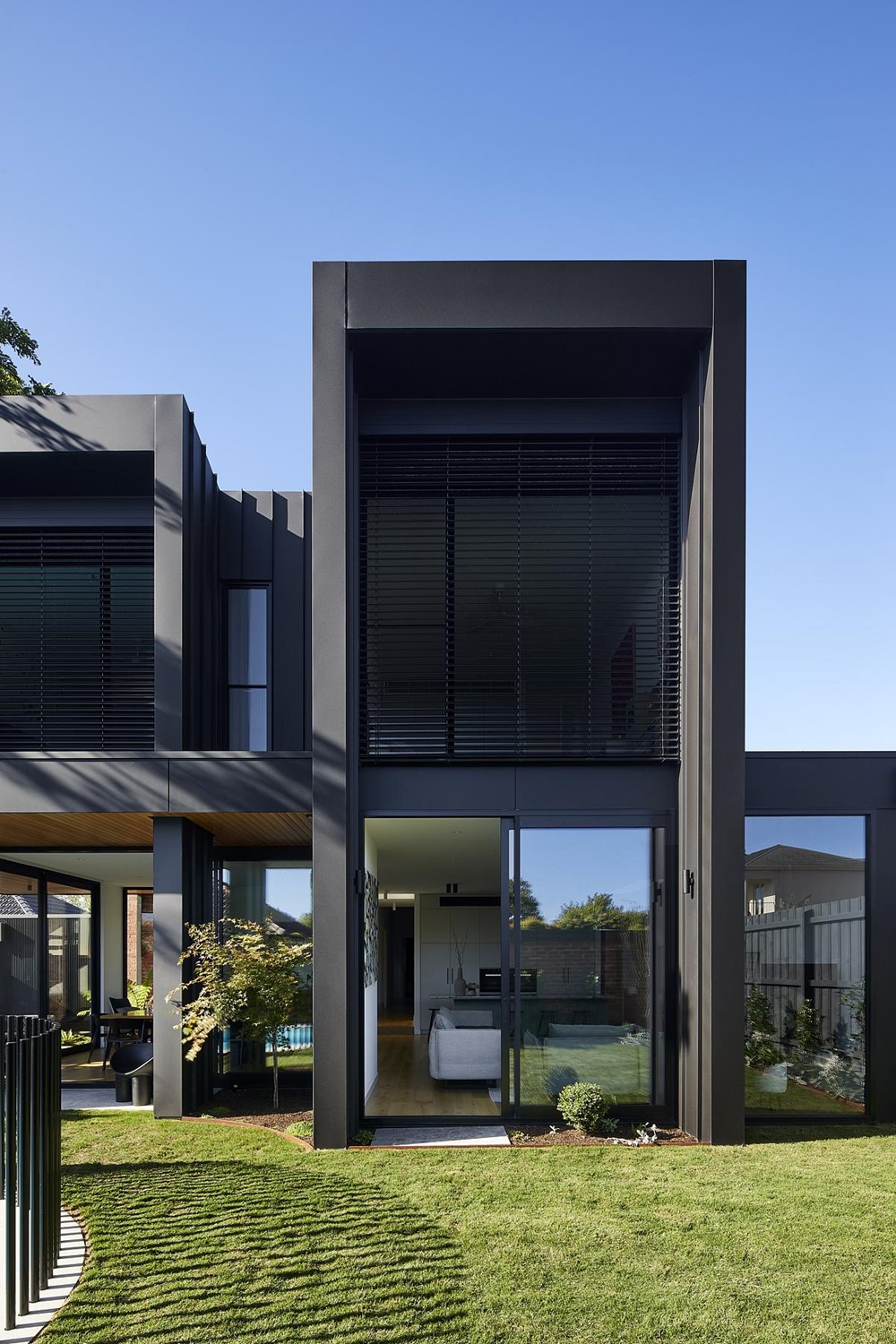
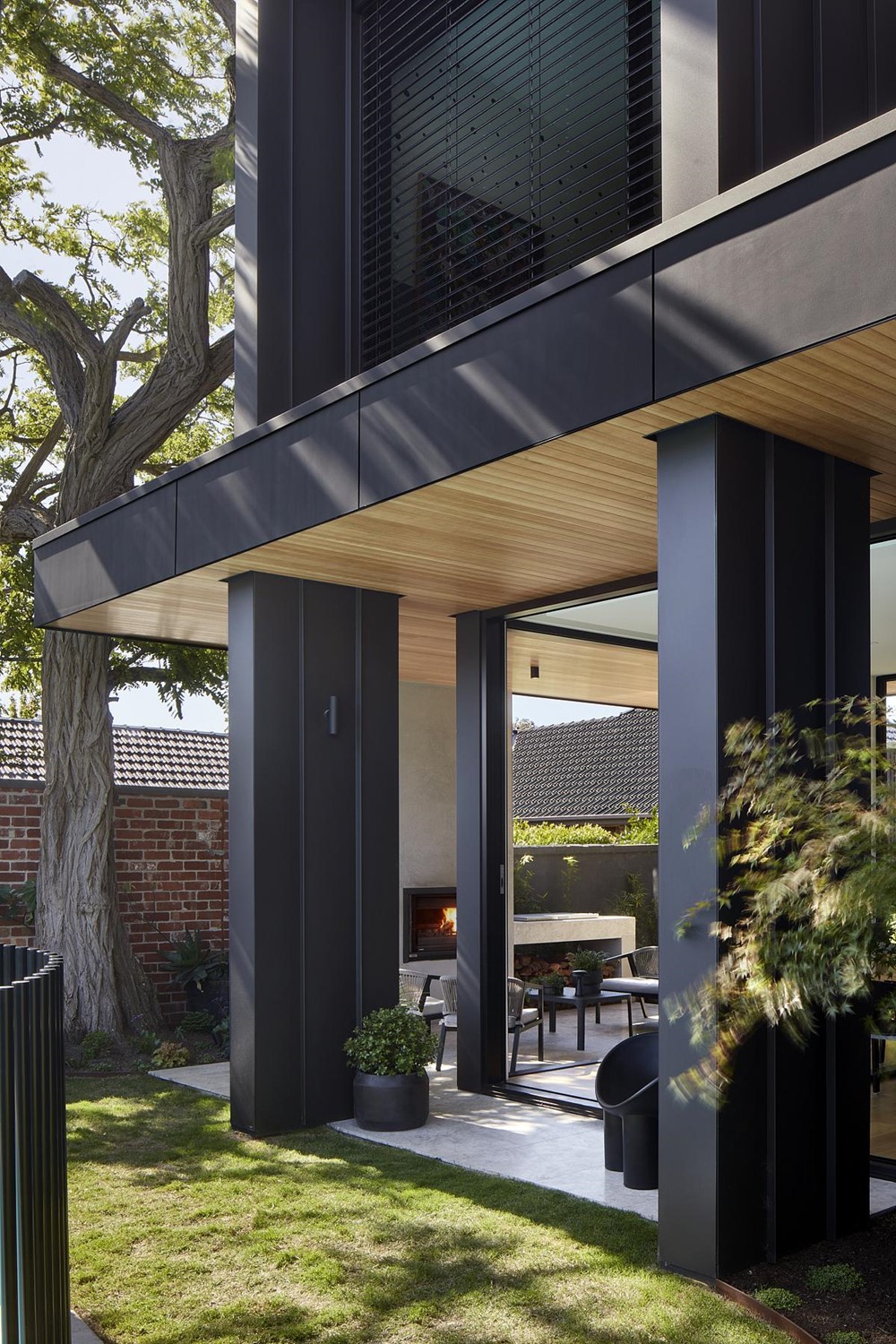
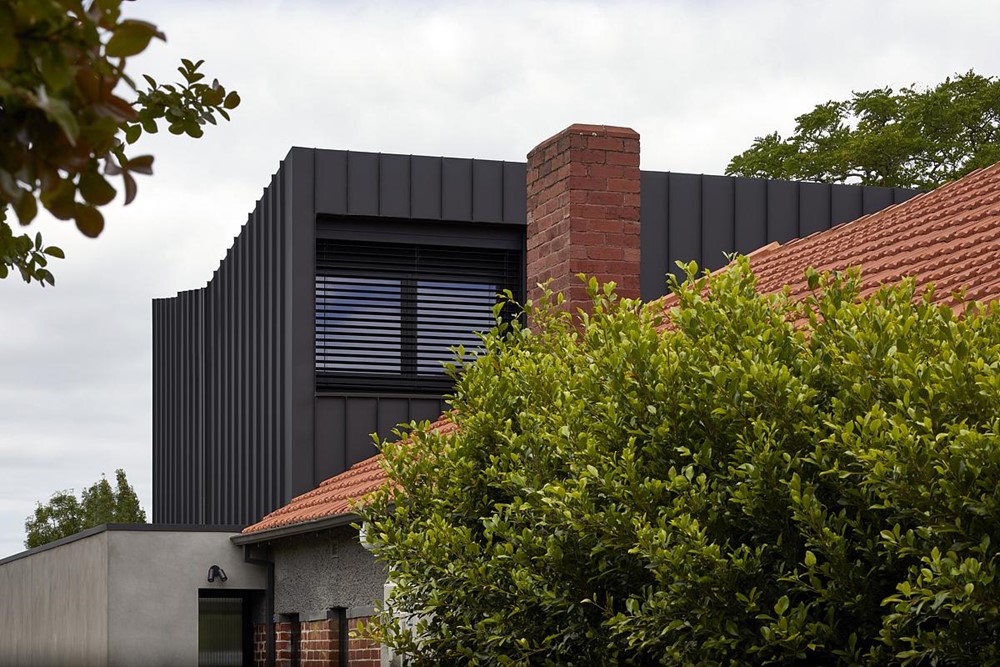
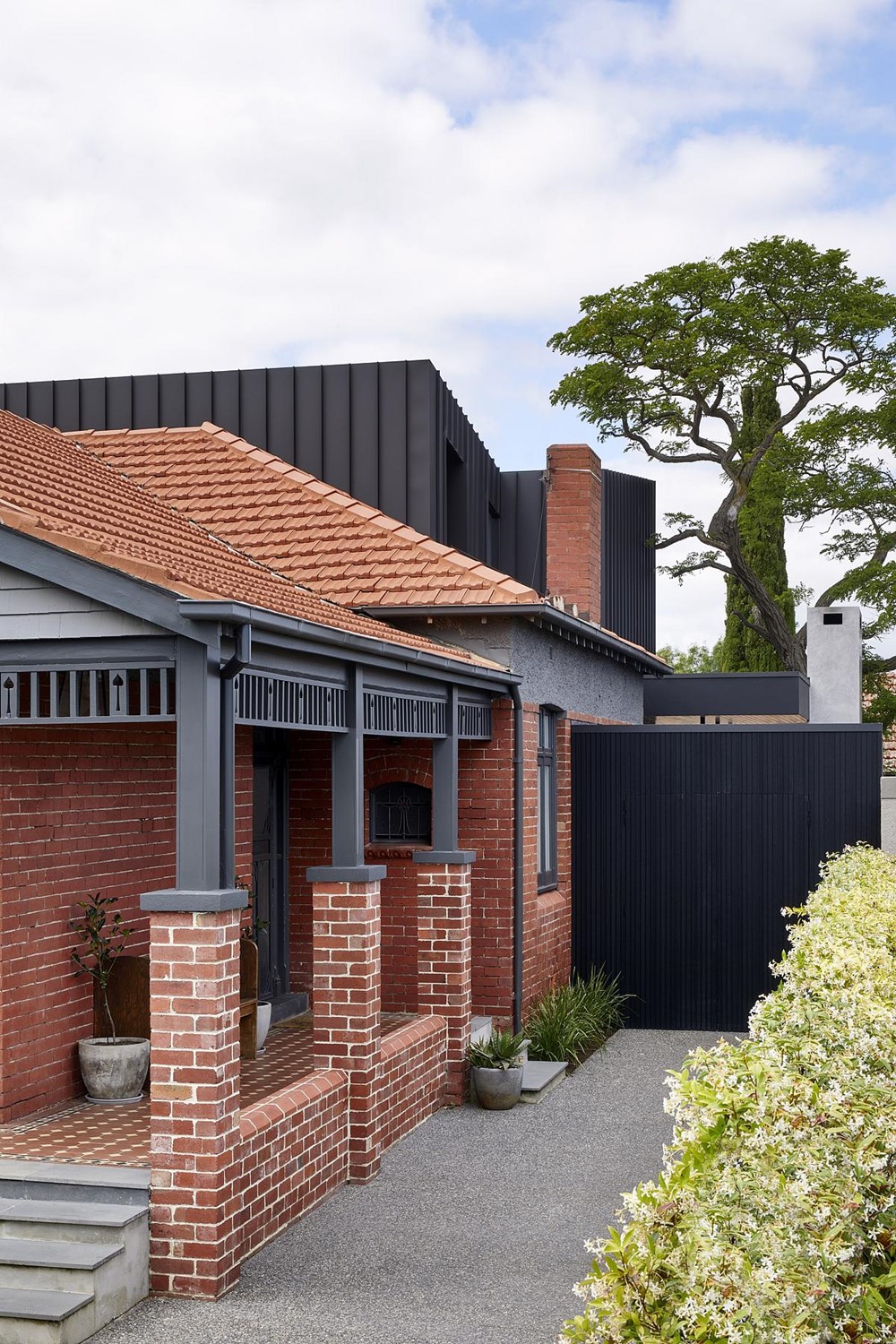
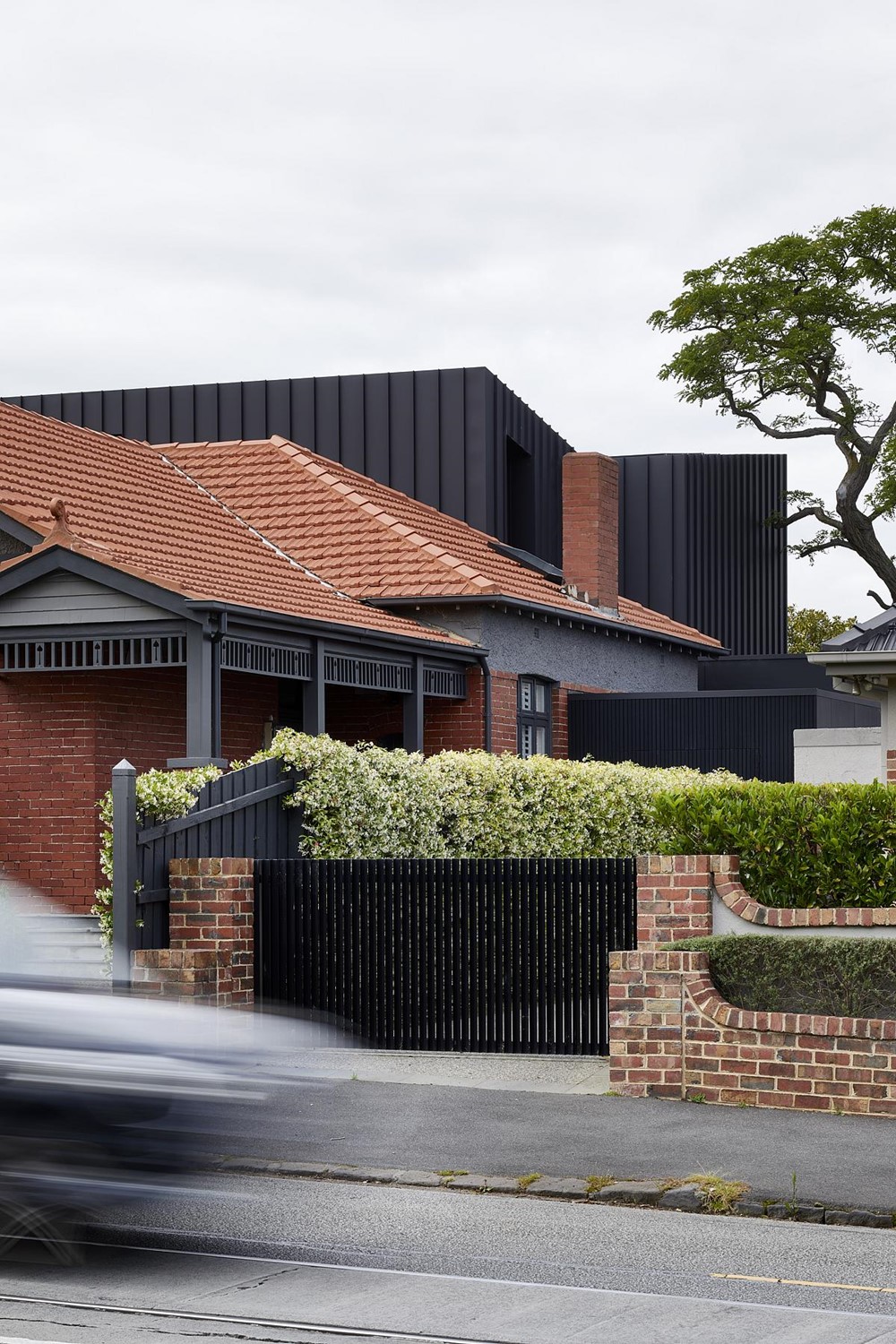
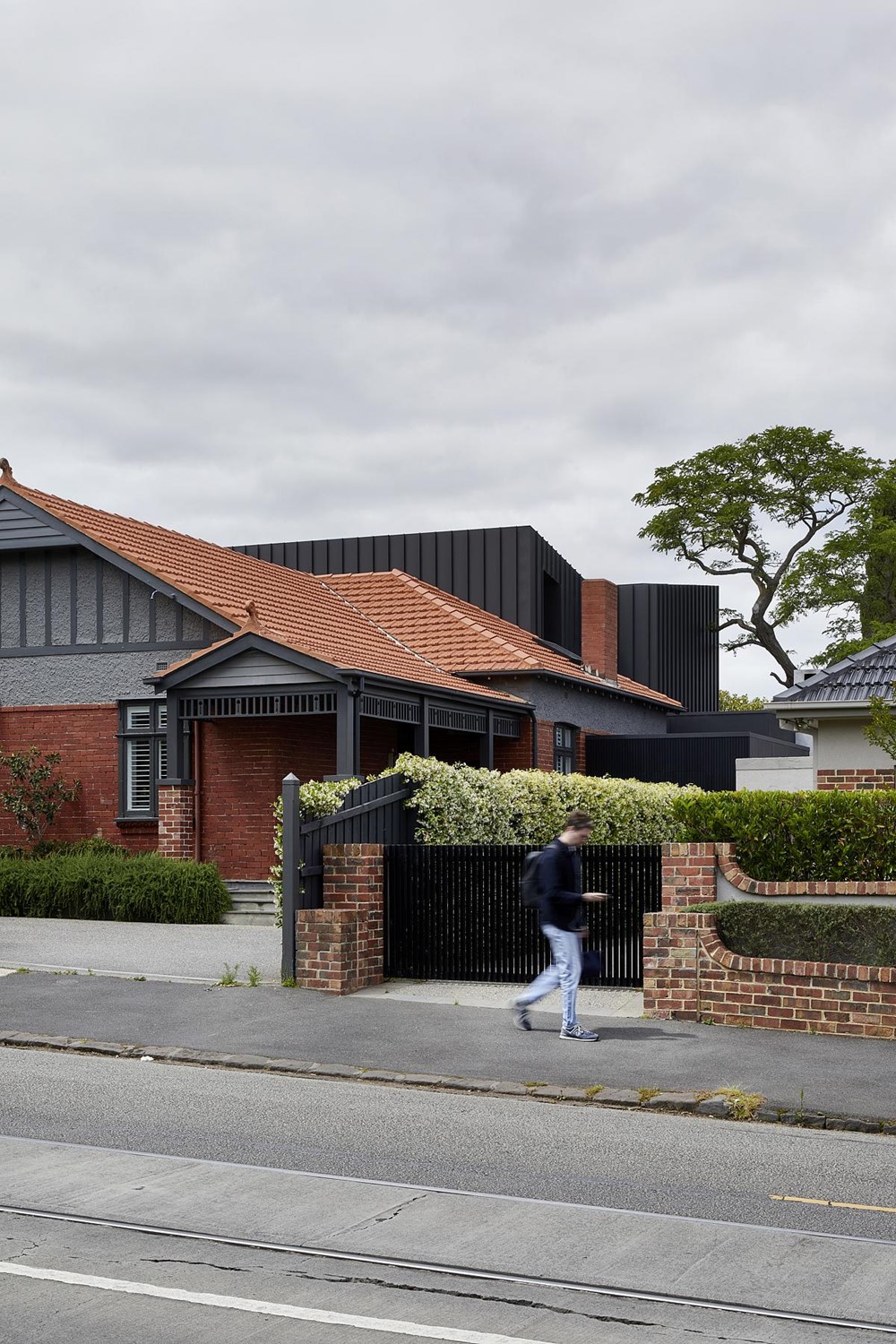
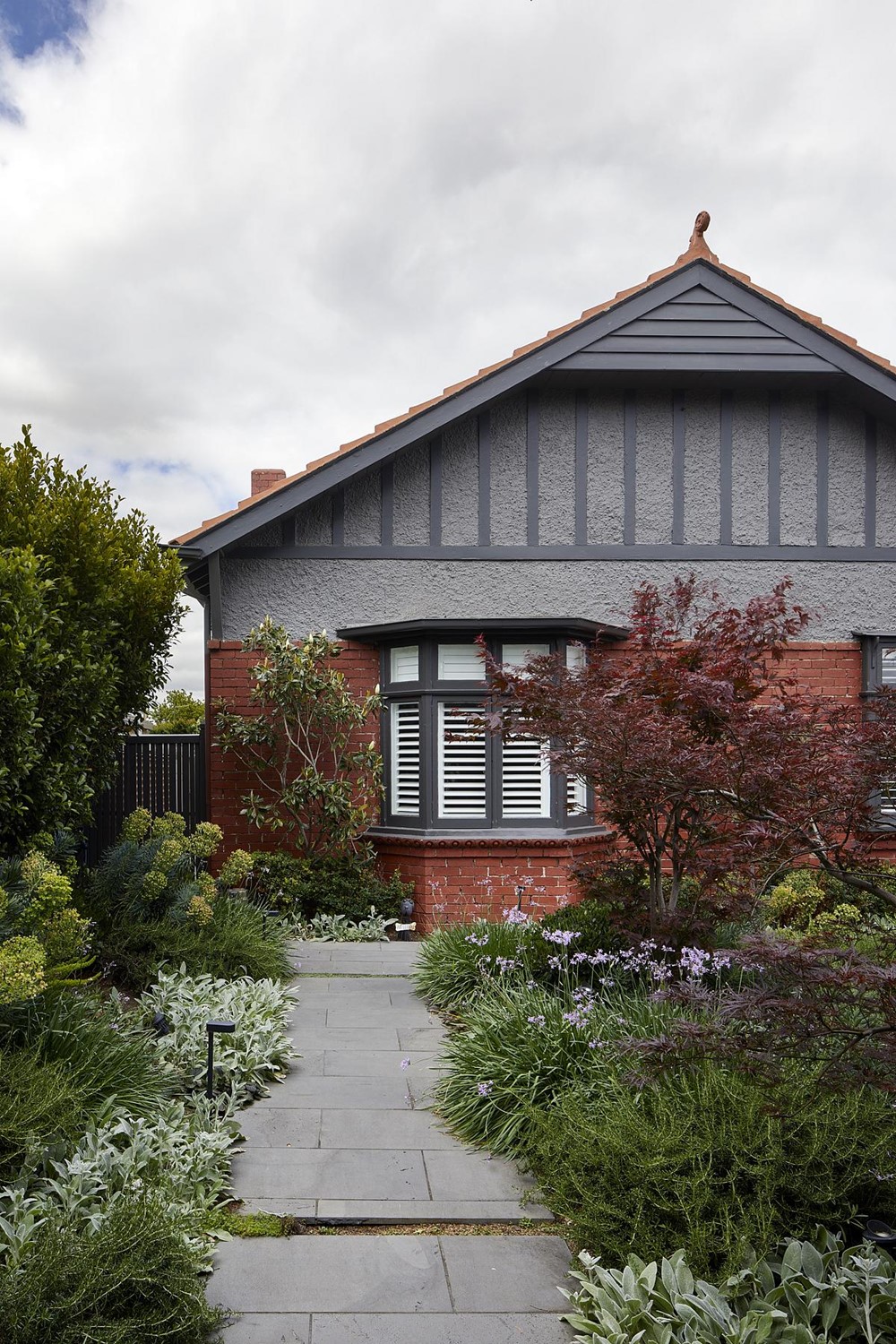
Stretching the original silhouette further and deeper into the site to engage more meaningfully with the laneway to the Southeast, the addition extrudes the mass of the home to the rear, taking on a more rectilinear form. Spread over two levels, a new butterfly-shaped roof reduces the overall pitch of the addition, allowing for the additional level to be inserted. Creating connections between inside and out was integral to lifestyle, with framed views from within and the weaving the new landscape in amongst the existing. In allowing a more flowing movement between inside and out, the outdoor entertaining areas and landscape become destinations of their own, bookending the site.
As a balancing to the prominent red brick and terracotta roof tiles on site, a muted layering of greys tones was utilised across the site to modernise the ornate detailing and find a point of connection between old and new. Activating the site and bringing light deeper into the everyday experience of the home was also key to how the home functioned. The opening up of the existing home draws the main activities of family life and communal gathering to occur in a more openly connected setting. Generous insertions of glazing and skylights above, then bring more of an obvious natural connection between inside and out.
Expressing its verticality, extrusions of the new form articulate the facade to the rear, extending outward and creating deep reveals that double for solar control. Operable elements then allow the home to become naturally ventilated, focussing on a robust low maintenance throughout. The resulting and binding palette across the site is then comprised of selections based on their longevity, together with natural stone and timber to add a sense of animation to various surfaces. In breaking up the formality of the original home, the new gestures ensure a continued relevance prevails, as a readying for legacy.
